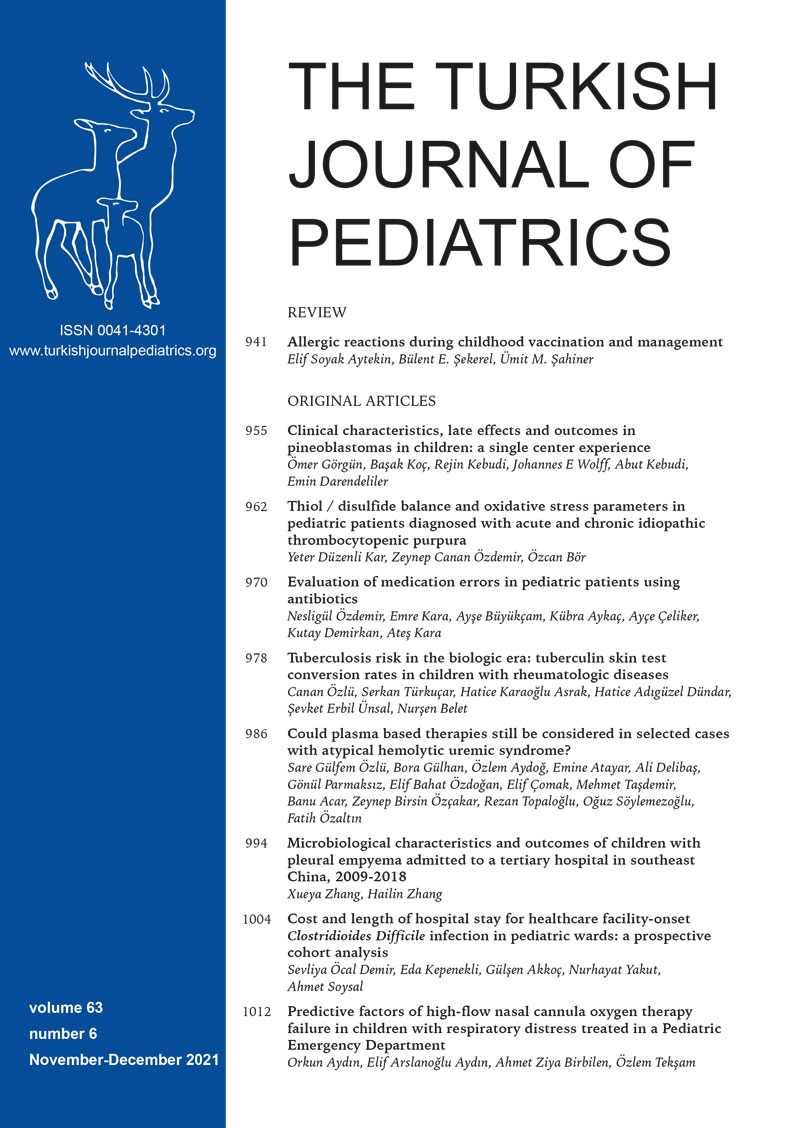Abstract
Background. Atypical hemolytic uremic syndrome (aHUS) occurs due to defective regulation of the alternative complement pathway (ACP) on vascular endothelial cells. Plasma based therapy (PT) was the mainstay of the treatment for aHUS for many years until the introduction of therapies targeting blockage of the complement system. The aim of this study was to evaluate patients with aHUS who had been treated with plasma based therapies alone.
Methods. The outcomes of seven genetically confirmed aHUS patients (2 girls, 5 males) were evaluated by means of clinical presentation, response to plasma therapy, course of the disease during the follow-up period and last status.
Results. The median age of the patients at admission was 6.7 years (IQR 0.7-7.8). Three patients received plasma exchange therapy and the other four patients were treated with plasma infusions. One patient was lost to follow-up after one year; the median duration of follow-up for other patients was 3.7 years (IQR 2.7-6.5). During the follow up, two patients from our historical records when complement blocking therapies had not been in clinical use yet in Turkey, underwent kidney transplantation. One transplant patient experienced an acute rejection episode without graft loss. The remaining five patients had a glomerular filtration rate of more than 90 ml/min./1.73 m < sup > 2 < /sup > at the last visit.
Conclusion. Although we had a relatively small patient population, our findings indicate that PT might still be considered in selected patients particularly in countries where complement blocking therapies are difficult to reach due to their unavailability or costs that are not covered by the health care systems.
Keywords: atypical hemolytic uremic syndrome, outcome, plasma exchange, plasma infusion, treatment













